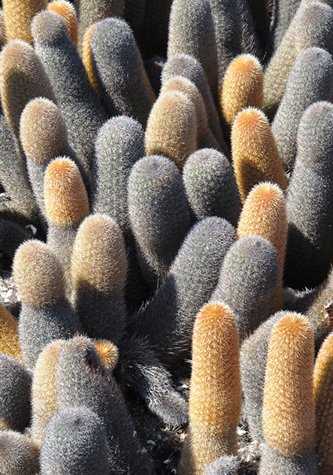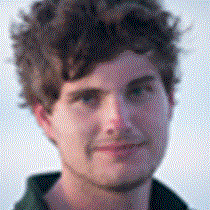Early this morning we woke up to clear skies and majestic views of the shield volcanoes of Fernandina and Isabela, the youngest islands of the Galapagos archipelago. We had travelled all night to reach this remote area, bathed by cold water currents coming from the depths of the sea. It is not uncommon to find large oceanic creatures here, and today was no exception. Before breakfast we had already spotted a couple of Bryde’s whales, a type of Mysticeti or baleen whale.
Afterwards we set foot on Punta Espinoza. Located on the northeastern tip of Fernandina Island, it is known for having the largest numbers of marine iguanas. We could soon confirm this as we were surrounded by many endemic black iguanas feeding on algae in the low tide. Everywhere we looked we found something, either a creature or some incredible animal behavior that made us feel like we were part of a nature documentary! More iguanas made their way into the sea, or swam in the tidal pools. A Galapagos hawk hunted little iguanas and lizards. Flightless cormorants dried their plumage by the shore under the equatorial sun. Galapagos sea lions played in the tidal pools, oblivious to our presence, while in the distance a flock of blue-footed boobies dove in the ocean in their typical kamikaze style.
Fernandina Island is covered in recent black lava flows. The one we walked on today was formed after an eruption in 1820; therefore, there hasn’t been much time for terrestrial life to take hold. The lack of fresh water makes Punta Espinoza quite a hostile place but it is also a breathtaking one.
In the afternoon, we navigated further north and across the Bolivar Channel to anchor by a place called Punta Vicente Roca, on the Isabela coast. Steep lava walls surround the anchorage, making us feel like we had suddenly been transported to some Nordic fjords except for the warm weather! Punta Vicente Roca is a marine site, and the plan for the afternoon was to go there to do some deep water snorkeling. Due to the abundance of sea weed, many Pacific green sea turtles come to this place for foraging. Being in the water surrounded by dozens of these gentle creatures was definitely a surreal scene as well as an unforgettable experience!
Later in the afternoon we returned to this section of the coast to search for wildlife above the water. The coastline here is mostly made out of tuff rock, a soft type of sedimentary rock. Carved by wave and wind action, it has been beautifully molded almost to a filigree style. The coastline is home to many endemic species like the Galapagos penguin, flightless cormorants, brown noddy terns and Galapagos fur sea lions. Blue-footed and Nazca boobies decorated the walls with their bright colors while performing courtship dances. With the sighting of some whale spouts in the vicinity we set off away from the coast to be near to some amazing Bryde’s whales!
Back onboard our ship, we celebrated the crossing of the equator line at sunset and, with a glass of champagne in hand, we made a toast to a spectacular day. Salud!





